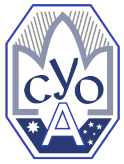The migrant hostel was established in December 1948 on the site of the former RAAF Air Service Flying School, some 5 Kilometres north west of the township of Uranquinty. During the occupancy through to its closure as a migrant centre in 1952, near 28,000 displaced persons/ refugees migrants passed through the facility, by far the greater majority of these being women and children.
Male migrants were contracted to work on projects at the discretion of the Commonwealth Dept. of Immigration.
As accommodation became available in proximity to where the workers were situated, then the families moved on from the hostel centre, hence the large figure shown as having been housed at Uranquinty in a relatively short period of time.
The NSW Department of Education opened a school for immigrant children. Staff at the centre totalled 100 by April 1949.
The huts were unlined corrugated iron with few provisions for comfort — suitable for toughness-building austerity in single men, but not suitable for women, children and particular young babies. Accommodation was dormitory-style for up to 22 people in separate single or family blocks. Though expected to be temporary, the immigrants were often kept there for up to three years.
The residents did their best with improvisation and ingenuity, for example, draping suitcases with material to use as a lounge chair and fastening a long thin metal pipe to a block of wood to make a lamp stand. However, it was still uncomfortable, the flimsy partitions, and the reverberations of the iron roofs meant that all noise including arguments and crying children was amplified. The immigrants thought that the Australian diet was monotonous and when they complained, they were told that if they wanted to live in Australia, they should get used to Australian food.
Because the immigrants were from various European countries, many encountered language problems. One of the main forms of entertainment was the picture show once a week at the cinema hall. There were night classes in English for the adults, and there was a small reference library.
Anne Ringwood, Daily Advertiser reporter inspected the camp after the first arrivals. She noticed the old main gate of the camp chained and locked fast beside a weathered leaning sentry box. The gate was hitched with a wire loop and the notice on the gate pleaded, “Please shut the gate – sheep here.” The old parade ground was bleached dry instead of the green the troops were used to. She noticed the strong, friendly-looking women who, she claimed. “looked like pictures in a travel magazine with their bright peasant scarves.” The women were standing by in the shade of the huts or were superintending the disposal of their luggage–all their worldly goods in great boxes and blanket bound bales which lay haphazardly on the road way between the huts. The experience must have been very confusing. They had been brought to Australia expecting to regain their freedom and move to wide open spaces, but they were once again herded into camps.
